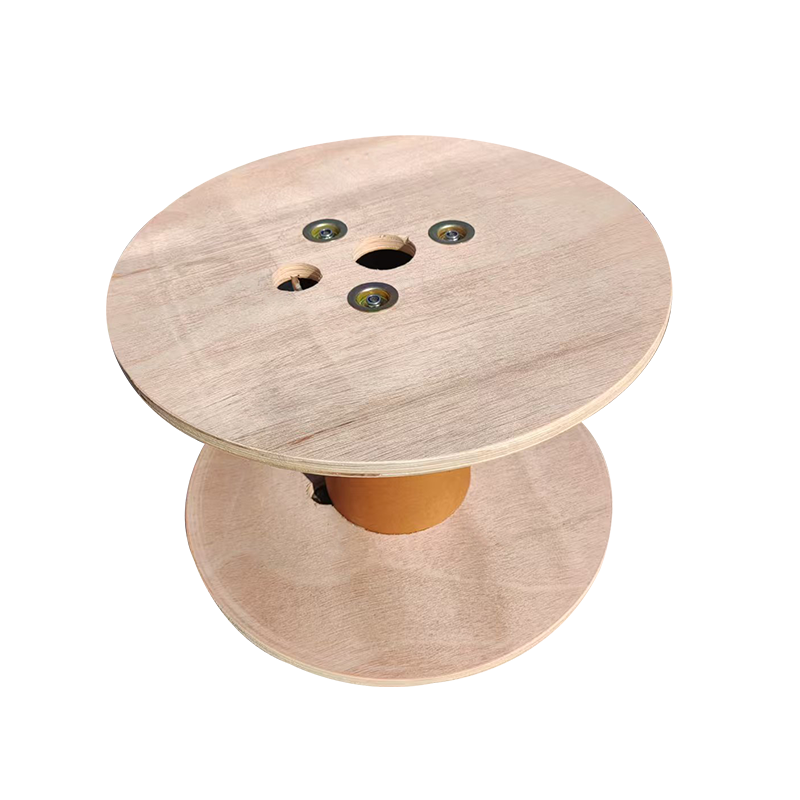May 12, 2025
When storing Cable Drum in a cold environment, a series of systematic storage and protection measures need to be taken to ensure that the performance of the cable insulation layer is not affected by low temperature and to avoid aging, cracking, loss of flexibility and other problems. The cable insulation layer is generally made of polyvinyl chloride (PVC), polyethylene (PE), cross-linked polyethylene (XLPE) or rubber materials. These materials are easy to harden or even crack in low temperature environments. If improperly handled, it will seriously affect the safety and durability of the cable during subsequent use.
First of all, try to avoid storing the cable drum outdoors for a long time and directly exposing it to cold air. The ideal storage method is to stack it in a warehouse with controllable indoor temperature. The ambient temperature should be maintained above 0℃. If it is really necessary to store it outdoors, temporary shelter facilities must be built, such as steel structure tarpaulin sheds or insulation tents, to reduce the direct impact of extreme weather such as wind, snow and direct sunlight. At the same time, the surface of the drum should be covered with thick waterproof and cold-proof materials, such as cotton blankets, plastic cloth, cold-proof film, etc., to maintain a relatively stable temperature environment.
Secondly, the cable drum should be stored overhead and should not be placed directly on the ground to avoid the insulation layer from freezing and absorbing moisture due to the conduction of cold and moisture on the surface. It is usually recommended to use wooden or plastic pallets to raise the drum by more than 15 cm. The ground needs to be kept flat and dry, and regular checks should be made for adverse factors such as water accumulation and ice.

Humidity control is also an important consideration for storing cables in cold environments. Although the air humidity in low-temperature environments is low, the temperature difference between day and night may cause condensation, causing frost or even ice on the cable surface. To prevent the insulation layer from aging due to repeated condensation and freezing, desiccant or dehumidification equipment should be placed around the drum. At the same time, both ends of the cable should be sealed with heat shrink tubing or plastic caps to prevent water vapor from entering the internal structure along the cable core.
After the cable is stored in a cold environment for a long time, its insulation layer often becomes harder and less flexible. Therefore, the drum should be moved to a warm area in advance before transportation or laying, and left to stand for 12 to 24 hours to restore the cable to a soft state before unfolding. Directly unfolding the cable at sub-zero temperatures will cause the insulation layer to crack due to excessive bending stress, posing a safety hazard.
In addition, regular inspections should be arranged throughout the winter storage period to conduct a comprehensive investigation of the cable appearance, drum structure and environmental conditions. If the insulation layer is hardened, the surface is cracked, the drum is damaged, or water enters the cable end, the damaged parts should be handled or replaced in time to avoid the problem from expanding.
Finally, it is recommended to establish a cable storage management ledger to record information such as the cable storage time, storage location, ambient temperature and humidity, and inspection records. Mastering the full life cycle status of the cable through traceable management methods will help ensure the reliability and safety of cable use in subsequent construction or maintenance.
The storage management of Cable Drum in cold environments must adopt systematic measures of "insulation, moisture-proof, shock-proof, and slow-release temperature difference". Through scientific means and meticulous management, the performance of the cable insulation layer is ensured to be stable and the service life of the cable is extended.